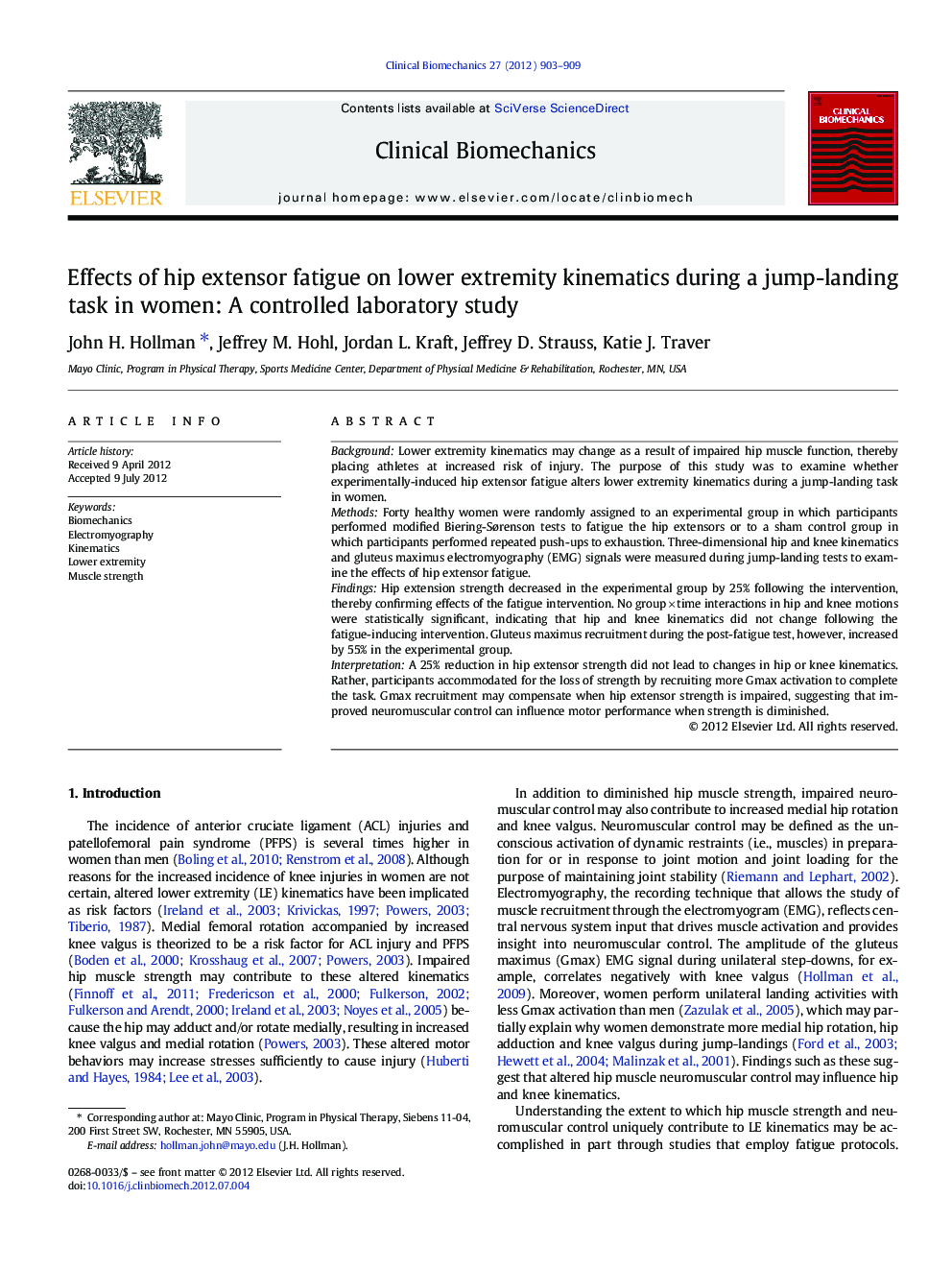| Article ID | Journal | Published Year | Pages | File Type |
|---|---|---|---|---|
| 6204982 | Clinical Biomechanics | 2012 | 7 Pages |
BackgroundLower extremity kinematics may change as a result of impaired hip muscle function, thereby placing athletes at increased risk of injury. The purpose of this study was to examine whether experimentally-induced hip extensor fatigue alters lower extremity kinematics during a jump-landing task in women.MethodsForty healthy women were randomly assigned to an experimental group in which participants performed modified Biering-Sørenson tests to fatigue the hip extensors or to a sham control group in which participants performed repeated push-ups to exhaustion. Three-dimensional hip and knee kinematics and gluteus maximus electromyography (EMG) signals were measured during jump-landing tests to examine the effects of hip extensor fatigue.FindingsHip extension strength decreased in the experimental group by 25% following the intervention, thereby confirming effects of the fatigue intervention. No group Ã time interactions in hip and knee motions were statistically significant, indicating that hip and knee kinematics did not change following the fatigue-inducing intervention. Gluteus maximus recruitment during the post-fatigue test, however, increased by 55% in the experimental group.InterpretationA 25% reduction in hip extensor strength did not lead to changes in hip or knee kinematics. Rather, participants accommodated for the loss of strength by recruiting more Gmax activation to complete the task. Gmax recruitment may compensate when hip extensor strength is impaired, suggesting that improved neuromuscular control can influence motor performance when strength is diminished.
